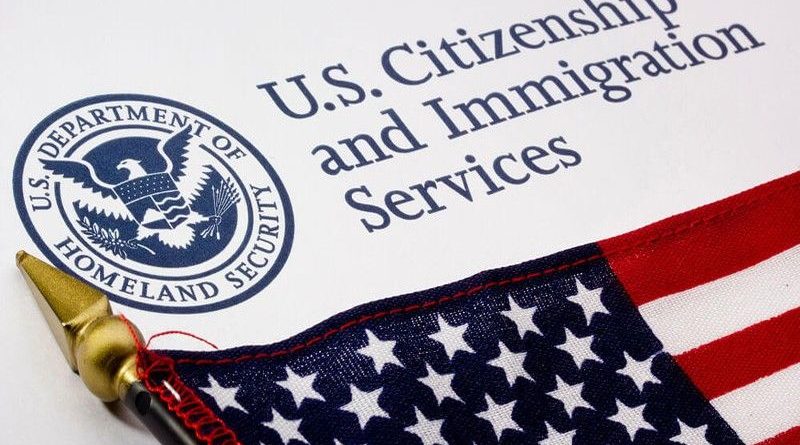IMMIGRATION-VISA: US immigration changes in 2020

WINTER is coming. And yes, winter will be longer.
The harsh winter is not caused by climate change, but a change in political winds that blew in with the current US administration.
Expect freezing winds to linger next year or until after November 2020 when America votes for a new (or reelect the current) president.
Buried in the maze and glacier of regulatory process are the proposed rules that the Department of Homeland Security — including the US Citizenship and Immigration Services (USCIS) — intends to implement in the coming year — and beyond. Here’s the tip of the regulatory iceberg.
ADS by Cloud 9:
.
– SPACE RESERVE FOR YOUR ADVERTISEMENT –

Asylum reforms. Every year people go to the US seeking protection because they have suffered persecution or fear that they will suffer persecution on account of an applicant’s race, religion, nationality, membership in a particular social group or political opinion.
USCIS and the US justice department will jointly propose revisions to existing asylum procedures in response to the growing affirmative and defensive asylum backlogs. The amendments aim to address frivolousness in the asylum caseload and increase efficiency in the resolution of applications for aliens who are barred from applying for asylum.
President Trump complains of the sharp rise in applications for asylum in the US, which more than tripled in seven years to 254,000 in 2018, according to global statistics compiled by the United Nations refugee agency. As a deterrent, the USCIS wants to “remove the regulatory provision requiring that USCIS has 30 days from the date an asylum applicant files the initial application for employment authorization, to grant or deny that application.
ADS by Cloud 9:
.
– SPACE RESERVE FOR YOUR ADVERTISEMENT –

Asylum applicants could expect to wait longer than 30 days before their application to work legally is determined. The American dream enters the frozen stage.
Heightened screening and vetting in immigration programs. For those arriving legally, particularly immigrants seeking to be reunited with their families, the USCIS continues its announced intent “better track, and enforce obligations under the contractual agreements that sponsors enter into with the federal government by signing an affidavit of support (AoS).”
Petitioners are required to submit an AoS to prove that they can provide for the basic and intermediate needs of the relative being sponsored for at least 10 years or until the relative becomes a US citizen, whichever comes first. If the petitioner does not have sufficient resources to meet the threshold income, he or she may get a joint sponsor. The joint or co-sponsor shares the obligations and responsibilities as the petitioner.
Should the sponsored relatives avail of benefits they are not entitled to, the US government can go after them for reimbursement. Take them to court, if need be.
ADS by Cloud 9:
.
– SPACE RESERVE FOR YOUR ADVERTISEMENT –

The proposed regulations of the USCIS intend to “eliminate multiple references to specific biometric types, and to allow for the expansion of the types of biometrics required to establish and verify an identity. The goals of this proposal will be to establish consistent identity enrollment and verification policies and processes.”
Removing H-4 dependent spouses from the class of aliens eligible for employment authorization. The spouse and/or minor children of workers granted temporary visas based on an approved employment based sponsorship are issued the H-4 visas. Currently, an H-4 visa holder or status may apply for employment authorization if the principal applicant (spouse or parent) is an H-1B visa holder or status and has an approved I-140 immigrant visa petition, or is in H-1B status based on the specific provisions under the American Competitiveness in the Twenty-first Century Act (AC21).
The H-4 visa holder may apply to extend the employment authorization period. The USCIS proposes to ”rescind the final ruled published in the Federal Register on Feb. 25, 2015.”
“The 2015 final rule amended DHS regulations by extending eligibility for employment authorization to certain H-4 dependent spouses of H-1B non-immigrants who are seeking employment-based lawful permanent resident status.”
ADS by Cloud 9:
.
– SPACE RESERVE FOR YOUR ADVERTISEMENT –

H-1B non-immigrant program and petitioning process regulations. In 2018, the USCIS processed 577,200 temporary work visa petitions. The total showed a slight decrease from 2018 but represented a 109 percent increase from 2014. From this number, 396,300 were H-4/H-1B beneficiary petitions, a “13 percent increase over the five fiscal years although a 2 percent decrease from 2017.”
In line with the policy to “Buy America, Hire Americans and America First, the USCIS “will propose regulations aimed at improving the H-1B non-immigrant program and petitioning process.The changes include imposing an additional fee and revise the definition of ‘specialty occupation’ and ‘employment and employer-employee relationship’ to help better protect US workers and wages.”
ADS by Cloud 9:
.
– SPACE RESERVE FOR YOUR ADVERTISEMENT –

Improvements to the overall immigration system. To enhance efficiency and efficacy of operations, USCIS will propose to amend its regulations to provide a process for mandating digital processing of immigration benefits. In addition, USCIS conducted its biennial fee review. As a result, there will be “adjustments to certain immigration and naturalization benefit fees to ensure that the fees recover full costs borne by the agency.” In short, expect more fee increases.
English proficiency test for healthcare workers. Under current rules, certain foreign nationals intending to practice their professions in the healthcare sector are required to provide evidence of English proficiency as part of the VisaScreen certification through the International Commission on Healthcare Professionals (ICHP), a division of the Commission on Graduates of Foreign Nurses (CGFNS).
At present the following health care occupations require this certification: nurses (licensed practical nurses, licensed vocational nurses, and registered nurses), physical therapists, occupational therapists, speech-language pathologists and audiologists, medical technologists (also known as clinical laboratory scientists), medical technicians (also known as clinical laboratory technicians), and physician assistants.
ADS by Cloud 9:
.
– SPACE RESERVE FOR YOUR ADVERTISEMENT –

Nurses must obtain an overall score of 6.5 with a minimum of 7.0 in the spoken component. The same scores are required of speech language pathologists, audiologists, clinical laboratory scientists and physician assistants. The others need only 6.0 overall scores.
Updating and improving the “appropriate standardized tests and minimum scores” is under way to ensure transparency so that that those seeking to enter the United States as healthcare workers are competent to communicate with an interdisciplinary team of providers and the patients and families they serve.”
Translation: expect higher scores needed to meet the minimum English language proficiency.
ADS by Cloud 9:
.
– SPACE RESERVE FOR YOUR ADVERTISEMENT –

Establishing a maximum period of authorized stay for F-1 and other non-immigrants. Most non-immigrants — especially those with B-1/B-2 visas — may be granted up to six months of initial authorized stay. Before the end of this lawful presence, a visitor or temporary worker must apply for extension of stay. In some cases, an extension of stay application is filed with an application to change status from one non-immigrant category to another (e.g., from visitor to student or working visa status).
F-1 academic students, on the other hand, are allowed to stay in the US as long as they are under a student status. Hence, the passport and/or I-94 of a student visa holder would indicate his or her stay as “D/S,” meaning duration of status. As long as the student is maintaining or complying with the conditions of this academic visa, he or she need not apply for an extension of stay.
ADS by Cloud 9:
.
– SPACE RESERVE FOR YOUR ADVERTISEMENT –

Now, the Immigration and Customs Enforcement agency under DHS (ICE) intends modify the “duration of status” and replace it with a maximum period of authorized stay, and options for extensions, for each applicable visa category. This change would help eliminate confusion over the length of authorized period of stay for non-immigrants to lawfully remain in the United States. It would also assist with efforts to reduce overstay rates.”
Visa security program fee. ICE also intends to propose a rule that would expand the Visa Security Program by moving it to a user-fee funded model. This change would enable ICE to expand visa security screening and vetting operations and investigative efforts to more visa-issuing posts overseas.
Such a change is expected to “enhance the US government’s ability to prevent travel to the United States by those who pose a threat to the national security interests of the US.”
ADS by Cloud 9:
.
– SPACE RESERVE FOR YOUR ADVERTISEMENT –

Expect additional fees on top of the current non-immigrant and immigrant visa fees. Tourist visa applicants, seafarers, airline crews, academic and vocational students, journalist and media practitioners, exchange students, victims of human trafficking, criminal activity and Nafta professionals currently pay $160, or P8,640.
Transitional workers in CNMI, temporary workers in the H category, athletes, artists, entertainers, international cultural exchange workers, religious workers, fiancées or fiancés of US citizens and treaty traders, investors pay more — $190, or P10,260.
With Congress deadlocked and with no authority to change existing laws, the Trump administration is changing the rules instead.
If the Executive Branch cannot change the way, let visa applicants wait instead. And pay more while waiting.
Next week: What to do, when to act: Options for US visa applicants









